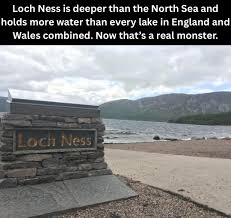The Mysteries of Loch Ness: A Deep Dive

Introduction to Loch Ness
Loch Ness, located in the Scottish Highlands, is renowned not just for its breathtaking scenery but also for the folklore surrounding its most famous resident, the Loch Ness Monster. This large freshwater lake stretches approximately 23 miles (37 km) and reaches depths of over 750 feet (230 meters), making it one of the largest lakes in the UK by volume. The combination of its size, remote location, and murky waters has fueled centuries of legends and intrigue, drawing tourists and researchers alike.
Historical Background
The history of Loch Ness is steeped in tales of the mythical creature known affectionately as “Nessie.” The first recorded sighting of a creature resembling the monster dates back to 565 AD, when St. Columba is said to have encountered a large beast while crossing the loch. However, it wasn’t until the 20th century that the modern legend truly took form, particularly after a 1934 photograph claimed to capture Nessie’s likeness, sparking widespread media attention and public fascination.
Recent Developments
In recent years, the interest in Loch Ness has surged, particularly following various scientific expeditions aimed at uncovering definitive proof of Nessie’s existence. In 2018, a high-profile research initiative employed cutting-edge sonar equipment and environmental DNA (eDNA) sampling to investigate the loch. While the results did not yield direct evidence of a creature, the study did uncover a wealth of information about the ecosystem, revealing a diverse range of fish species across the loch.
Moreover, the pandemic led to a significant uptick in domestic tourism within Scotland, with Loch Ness becoming a hotspot for visitors seeking natural beauty and adventure. Local businesses, including boat tours and accommodation providers, reported increased footfall as tourists flocked to explore both the loch and its surrounding landscapes.
Conclusion: The Mystery Continues
Despite the many scientific investigations and the myriad of theories, the legend of Loch Ness and its elusive monster endures. The allure of the unknown drives both curiosity and tourism, making Loch Ness not only a picturesque destination but also a cultural phenomenon. As technology advances and new methods of exploration are developed, the quest for answers continues, ensuring that the legend of Nessie remains a captivating blend of folklore and science for generations to come. For now, Loch Ness stands as a testament to the power of myth and the human desire to explore the depths of the unknown.









